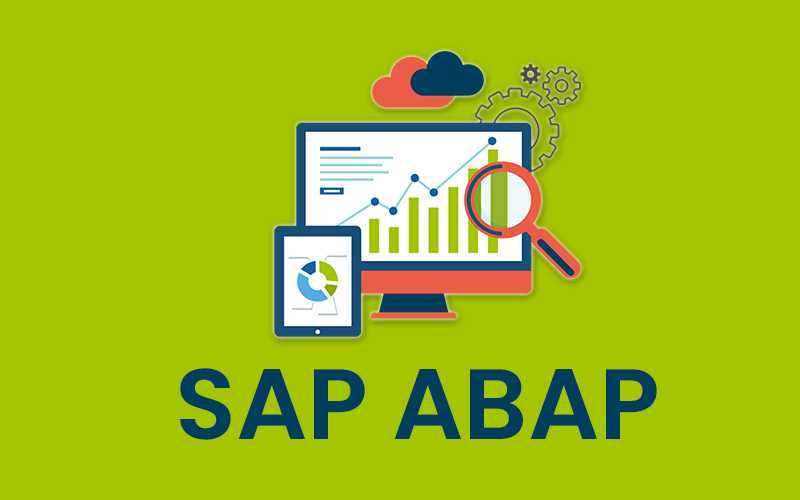SAP HANA Admin (basic to advanced)
Learn how to install, configure, operate, and administer the end-to-end SAP HANA landscape. Master HANA architecture, sizing, backup, replication etc.Preview SAP HANA Admin (basic to advanced) course
View Course Curriculum Price Match Guarantee Full Lifetime Access Access on any Device Technical Support Secure Checkout Course Completion Certificate 50% Started a new career
BUY THIS COURSE (
50% Started a new career
BUY THIS COURSE (GBP 12 GBP 29 )-
 77% Got a pay increase and promotion
77% Got a pay increase and promotion
Students also bought -
-

- Career Path - SAP Technical Consultant
- 300 Hours
- GBP 99
- 4145 Learners
-

- SAP Basis
- 25 Hours
- GBP 12
- 1932 Learners
-

- SAP ABAP
- 30 Hours
- GBP 12
- 111 Learners

SAP HANA is an in-memory columnar relational database management system developed by SAP SE for performing real-time data analysis, and development of applications. It is designed to handle large volumes of data in real-time, enabling businesses to process and analyze data quickly. SAP HANA administration involves managing and maintaining the SAP HANA database and system landscape to ensure optimal performance, reliability, and security.
HANA administration deals with managing SAP HANA system in a single and distributed system environment. Each HANA system can contain multi node architecture with each node containing multiple processors for fast speed data analysis and real-time data provisioning. You can use Smart data access to get the data from non-SAP systems without importing the data to HANA database, and virtual tables can be used to perform read/write data operations
SAP HANA features a cloud-based functioning, it works in real time and SAP HANA supports multiple isolated databases (multitenant database containers) in a single SAP HANA system. Hence correct d esigning and installation of latest hardware and alternative SAP suits on the cloud are needed.
Key aspects of SAP HANA administration include:
1. Installation and Configuration: The first step in SAP HANA administration is installing the SAP HANA software on the server and configuring the system according to the specific requirements of the organization. This involves setting up the necessary hardware, network, and software components.
2. System Monitoring: Monitoring is crucial to keep track of the health and performance of the SAP HANA system. Administrators use various tools and dashboards to monitor CPU and memory usage, data storage, query performance, and other critical metrics.
3. User and Security Management: SAP HANA administrators manage user access and permissions to ensure data security. This includes creating and maintaining user accounts, roles, and privileges, as well as implementing security policies to protect sensitive information.
4. Backup and Recovery: Regular backups are essential to safeguard data in case of hardware failures, data corruption, or other disasters. SAP HANA administrators schedule and execute backup processes, and they should also be familiar with recovery procedures to restore the system to a consistent state.
5. Performance Tuning: SAP HANA administration involves identifying and resolving performance bottlenecks to optimize the system's speed and efficiency. This may involve tuning SQL queries, adjusting memory settings, or making other configuration changes.
6. High Availability and Disaster Recovery: To ensure uninterrupted business operations, administrators implement high availability and disaster recovery strategies. This may involve setting up system replication across multiple servers and data centers.
7. Patching and Upgrades: Administrators are responsible for applying patches, fixes, and updates to keep the SAP HANA system up-to-date with the latest features and security enhancements.
8. System Optimization: Optimizing the SAP HANA system for specific workloads and use cases is an essential task. This may involve adjusting memory allocation, partitioning data, or creating appropriate indexes.
9. Data Modeling and Administration: SAP HANA administrators work closely with data modelers and developers to design and manage the database schema, data models, and data artifacts.
10. Troubleshooting and Issue Resolution: When problems arise, administrators are responsible for identifying the root cause and resolving issues promptly to minimize downtime and disruptions.
It's worth noting that SAP HANA administration requires a solid understanding of database concepts, system administration, and SAP HANA-specific tools and technologies. As with any complex system, continuous learning and staying up-to-date with the latest best practices are essential for effective SAP HANA administration.
Uplatz provides this comprehensive course on SAP HANA Administration covering all aspects of HANA admin.
Course/Topic 1 - Course access through Google Drive
-
Google Drive
-
Google Drive
The key objectives of SAP HANA Admin (basic to advanced) course are:
1) Learn SAP HANA basics, features, architecture, and terminology involved
2) Work on HANA Studio Modelers and gain expertise in modeling
3) Master SAP HANA Interface, client and connectivity
4) Auto-documentation process and SAP BO Analysis
5) Learn SAP HANA administration activities like managing users, storage and security
6) Master System Replication, data provisioning, and ABAP Dataflow
7) Configuring, reporting, monitoring & dashboard creation using SAP HANA
8) Work on real-time and complex HANA projects
9) Writing SAP HANA queries and performance tuning
10) Prepare for SAP Certified Application Associate Exam
11) Learn SAP HANA Introduction, Architecture, Sizing
SAP Hana Admin (basic to adv) - Course Syllabus
SAP HANA Landscape
o SAP HANA components, editions ,scenarios and guides
SAP HANA Architecture
o SAP HANA persistence
o Sizing SAP HANA
o Scale out SAP HANA
SAP HANA Tool Overview
o SAP HANA studio for administrator
o DBA Cockpit
Pre & Post Installation of SAP HANA
o Preparing SAP HANA installation
o On-site configuration tool
o Post installation steps
Operate SAP HANA
o Starting and stopping SAP HANA
o Backup and recovery
o Maintaining Users and Authorizations
o Periodic manual task
o Monitoring with SAP HANA Studio
o Monitoring with DBACOCKPIT
o Software Lifecycle Management
o Monitor and Troubleshoot SAP HANA
o Updating SAP HANA and SAP HANA Studio
Data Provisioning
o Configure data replication with SAP Landscape Transformation (SLT)
Configure data replication with SAP Data Services
The SAP HANA Admin (basic to advanced) Certification ensures you know planning, production and measurement techniques needed to stand out from the competition.
SAP HANA is an in-memory database and application, which runs on SAP authenticated hardware and Software. SAP HANA has three versions – platform, enterprises and extended. SAP HANA can load data from SAP and Non-SAP data sources through SLT, BODS, DXC, and Sybase. SAP HANA provides real-time provisioning and reporting.
HANA is a system designed for efficient management of relational databases. To provide high performance and efficiency, SAP HANA uses in-system memory and data columns. HANA is commonly used by many organizations and data professionals.
Freshers can learn SAP HANA but at the geeting opportunity will be a bit challenging. You should be strong in SAP HANA with SQL & Analytics as well. If you are well versed with Any Traditional Database & Functionality then it will help you understand HANA.
Uplatz online training guarantees the participants to successfully go through the SAP HANA Admin (basic to advanced) Certification provided by Uplatz. Uplatz provides appropriate teaching and expertise training to equip the participants for implementing the learnt concepts in an organization.
Course Completion Certificate will be awarded by Uplatz upon successful completion of the SAP HANA Admin (basic to advanced) online course.
The SAP HANA Admin (basic to advanced) draws an average salary of $117,000 per year depending on their knowledge and hands-on experience.
SAP certification is an excellent career option for those candidates who dream to become a successful SAP HANA consultant. There is no doubt that SAP HANA job offers complete job satisfaction with a greater salary range.
SAP HANA's future is great. According to the expert of SAP HANA uses the latest and very innovative technology no one is going to beat in nearly two or three decades. The current version of SAP HANA has advanced data analytics that's useful in predicting customer patterns and behavior.
Note that salaries are generally higher at large companies rather than small ones. Your salary will also differ based on the market you work in.
SAP HANA Payroll Consultant.
SAP SF / HANA – Manager.
SAP HANA Consultant.
1. Mention what’s SAP HANA?
Ans:
SAP HANA stands for top Performance Analytical Appliance- in-memory computing engine. HANA is connected to ERP systems; Frontend modeling studios are often used for replication server management and cargo management. (sap Hana admin interview questions)
2. Mention the 2 sorts of relative knowledge keep in HANA?
Ans:
The two sorts of relative knowledge keep in HANA includes
- Row Store
- Column Store
3. Mention what’s modeling studio?
Ans:
Declares that tables area unit keep in HANA, 1st half is to urge the meta-data and so schedule knowledge replication jobs
Manage knowledge Services to enter the info from SAP Business Warehouse and different systems
Manage ERP instances affiliation, this unleashes doesn’t support connecting to many ERP instances
Use knowledge services for the modeling
Do modeling in HANA itself
essential licenses for SAP BO knowledge services
4. Mention what area unit the various compression techniques?
Ans:
There are unit 3 totally different compression techniques
- Run-length encryption
- Cluster encryption
- Dictionary encryption
5. Mention what’s latency?
Ans:
Latency is said the length of your time to copy knowledge from the supply system to the target system.
6. justify what’s transformation rules?
Ans:
The transformation rule is that the rule laid out in the advanced replication setting group action for the supply table specified knowledge is remodeled throughout the replication method.
7. Mention what’s the advantage of SLT replication?
Ans:
It allows a period of time knowledge replication, replicating solely connected knowledge into HANA from non-SAP and SAP supply systems
It is totally integrated with HANA studios
Replication from many supply systems to 1 HANA system is allowed, additionally from one supply system to multiple HANA systems is allowed.
8. justify however you’ll avoid unnecessary data from being stored?
Ans:
To avoid unnecessary data from being kept, you have got to pause the replication by stopping the scheme-related jobs (sap Hana admin interview questions)
9. what’s the role of the master controller job in SAP HANA?
Ans:
The job is organized on demand and is accountable for
Creating info triggers and work table into the supply system
Creating Synonyms
10. justify what happens if the replication is suspended for an extended amount of your time or system outage of SLT or HANA system?
Ans:
If the replication is suspended for an extended amount of your time, the dimensions of the work tables will increase.









